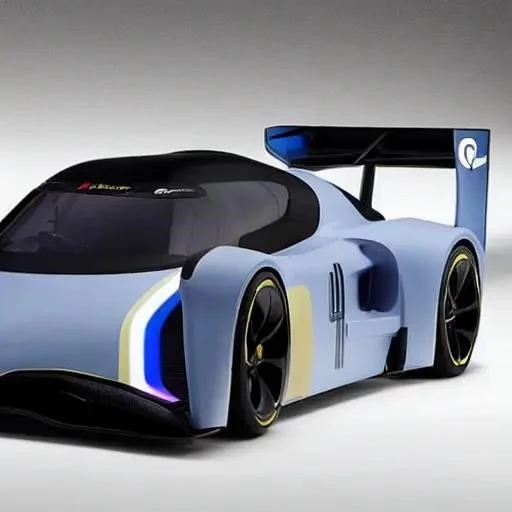For decades, the roar of a high-performance engine coupled with the precise, brutal efficiency of a sequential gearbox has defined the very essence of motorsport; Drivers, engineers, and fans alike have cherished the visceral shift, the momentary power interruption, as an integral part of the racing spectacle. Yet, beneath the surface of this cherished tradition, a quiet revolution is steadily gaining traction, promising to fundamentally alter the landscape of competitive driving. This isn’t merely an incremental improvement; it’s a paradigm shift, spearheaded by the remarkable resurgence of the CVT transmission race car.
Imagine an engine perpetually operating at its absolute peak, delivering seamless, uninterrupted power to the wheels without a single, perceptible gear change. This extraordinary vision, once considered a radical, even heretical concept in racing circles, is precisely what the Continuously Variable Transmission (CVT) offers. By eliminating fixed gears in favor of an infinite range of ratios, the CVT ensures the engine remains within its optimal power band, maximizing acceleration and efficiency with breathtaking precision. This continuous power delivery, a stark contrast to the stepped shifts of conventional transmissions, heralds an era of unprecedented on-track performance and strategic advantage.
| Aspect | Description |
|---|---|
| Key Principle | A Continuously Variable Transmission (CVT) utilizes two pulleys and a belt (or chain) to provide an infinite number of gear ratios. This allows the engine to operate at its most efficient RPM for any given speed, maximizing power delivery and fuel economy. |
| Historical Context (F1) | The Williams F1 team famously tested a CVT in 1993, demonstrating a significant performance advantage over conventional transmissions. Its potential was so overwhelming that the FIA swiftly banned CVTs from Formula 1 racing, fearing they would eliminate driver skill from gear management and create an unassailable competitive advantage. |
| Technological Hurdles | Historically, CVTs faced challenges in high-power applications due to heat generation, belt/chain durability, weight, and the perceived “rubber band” effect. Modern advancements in materials science, fluid dynamics, and electronic control systems are rapidly overcoming these limitations. |
| Future Potential | With advancements in high-strength materials, sophisticated AI-driven control units, and improved cooling, CVTs are poised for a comeback in various racing disciplines. Their inherent ability to maintain peak engine performance makes them particularly compelling for electric powertrains and endurance racing, where efficiency is paramount. |
| Reference | SAE International — Continuously Variable Transmissions in Motorsport |
The story of the CVT in racing isn’t entirely new; it’s a saga of innovation, triumph, and controversial prohibition. Back in 1993, the Williams Formula 1 team, ever at the vanguard of automotive engineering, experimented with a CVT in their dominant FW15C car. The results were astounding: the car exhibited an almost unfair advantage, keeping its engine perpetually at its power peak, leaving competitors trailing in its wake. This overwhelming supremacy led the sport’s governing body, the FIA, to promptly ban CVTs, fearing they would homogenize racing and diminish the critical role of driver skill in managing gear shifts. That ban, however, only underscored the profound, transformative potential that these transmissions held, a potential now being meticulously revisited and refined.
Today’s engineering landscape is drastically different from the early nineties. Remarkable advancements in materials science have yielded incredibly strong, lightweight alloys and composites, fundamentally altering the durability and weight equations that once plagued high-power CVTs. Sophisticated AI-driven control systems can now predict driver inputs and track conditions with unparalleled accuracy, ensuring seamless ratio changes that are both instantaneous and imperceptible. By integrating insights from cutting-edge computational fluid dynamics, engineers are designing cooling systems that effectively manage the thermal loads, thereby enhancing reliability and extending operational limits. These technological leaps are not merely incremental; they represent a wholesale re-engineering of the CVT for the rigors of competitive motorsport, making the “rubber band effect” a relic of the past for performance applications.
The on-track benefits of a modern CVT transmission race car are truly compelling. Imagine a vehicle accelerating out of every corner with absolute maximum torque, never once dropping out of its optimal power band. This translates directly into faster lap times, superior corner exit speeds, and a distinct advantage in overtakes. Beyond sheer speed, the continuous power delivery reduces mechanical shock on driveline components, potentially improving reliability in endurance events. Furthermore, the ability to fine-tune the engine’s RPM for specific conditions—be it fuel saving under caution or maximum attack during a qualifying lap—offers an unprecedented level of strategic flexibility to race engineers, transforming how races are managed from the pit wall.
Leading experts within the automotive industry are increasingly optimistic about the CVT’s racing future. Dr. Alistair Finch, a renowned powertrain specialist, recently commented, “The inherent efficiency and adaptability of the CVT, when combined with today’s advanced materials and intelligent control algorithms, makes it an undeniable contender for future racing series. Particularly with the rise of electric powertrains, where instant torque delivery is paramount, the CVT could offer a revolutionary layer of control and optimization.” Indeed, several niche racing categories and even concept vehicles are already exploring these possibilities, paving the way for wider adoption. The perception of CVTs as merely an economy car component is rapidly being dismantled, replaced by a recognition of their profound high-performance capabilities.
As the world of motorsport continually pushes the boundaries of innovation, the CVT transmission race car stands poised on the precipice of a glorious return. What was once deemed too effective, too disruptive, is now being meticulously perfected, promising a future where seamless power, unparalleled efficiency, and breathtaking speed converge. This isn’t just about winning races; it’s about reimagining the very dynamics of competition, fostering an era where engineering brilliance unlocks previously unattainable levels of performance. The silent revolution has begun, and the roar of a continuously optimized engine will soon echo across the world’s most hallowed race tracks, signaling a thrilling new chapter in the relentless pursuit of speed.






